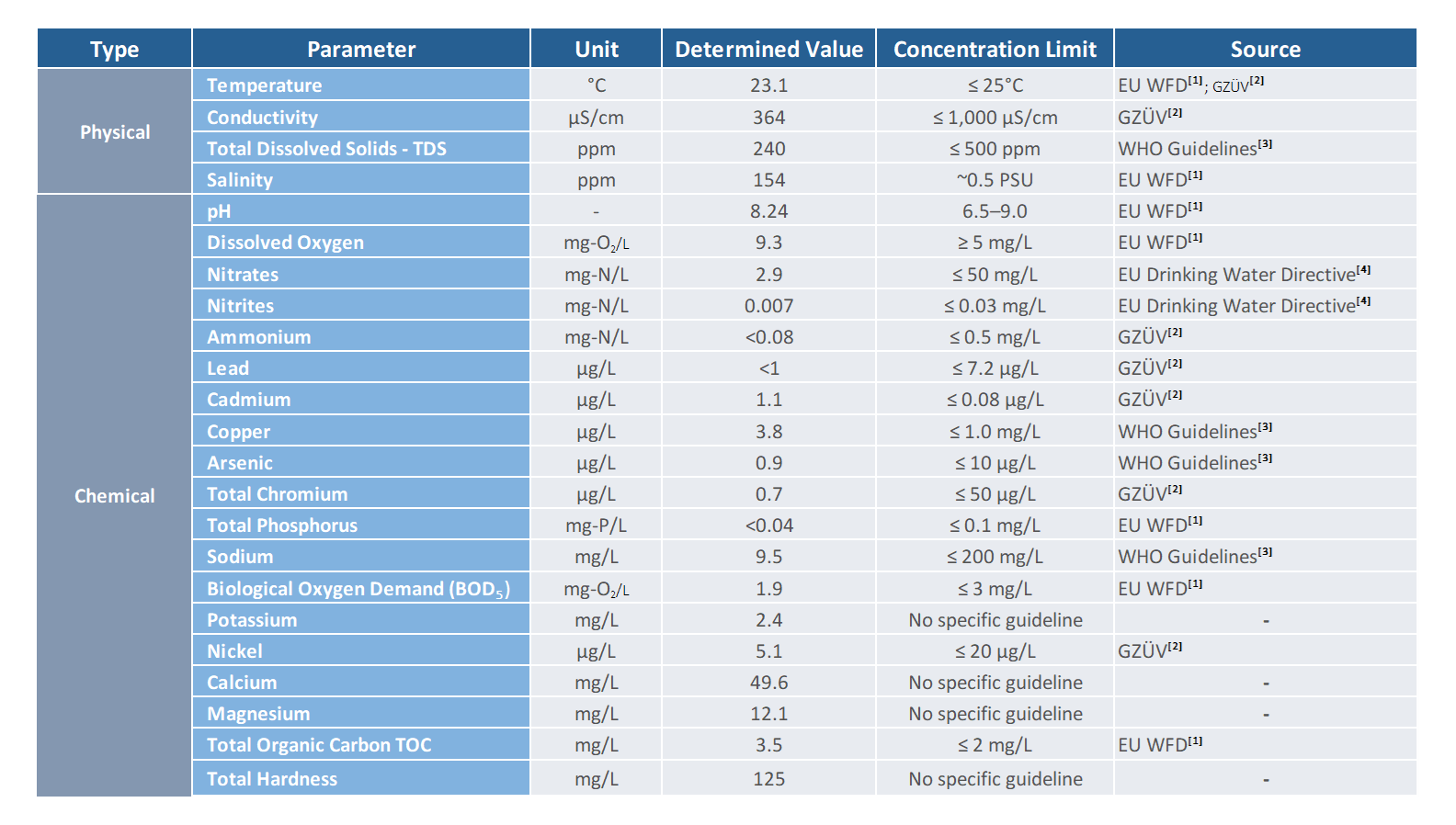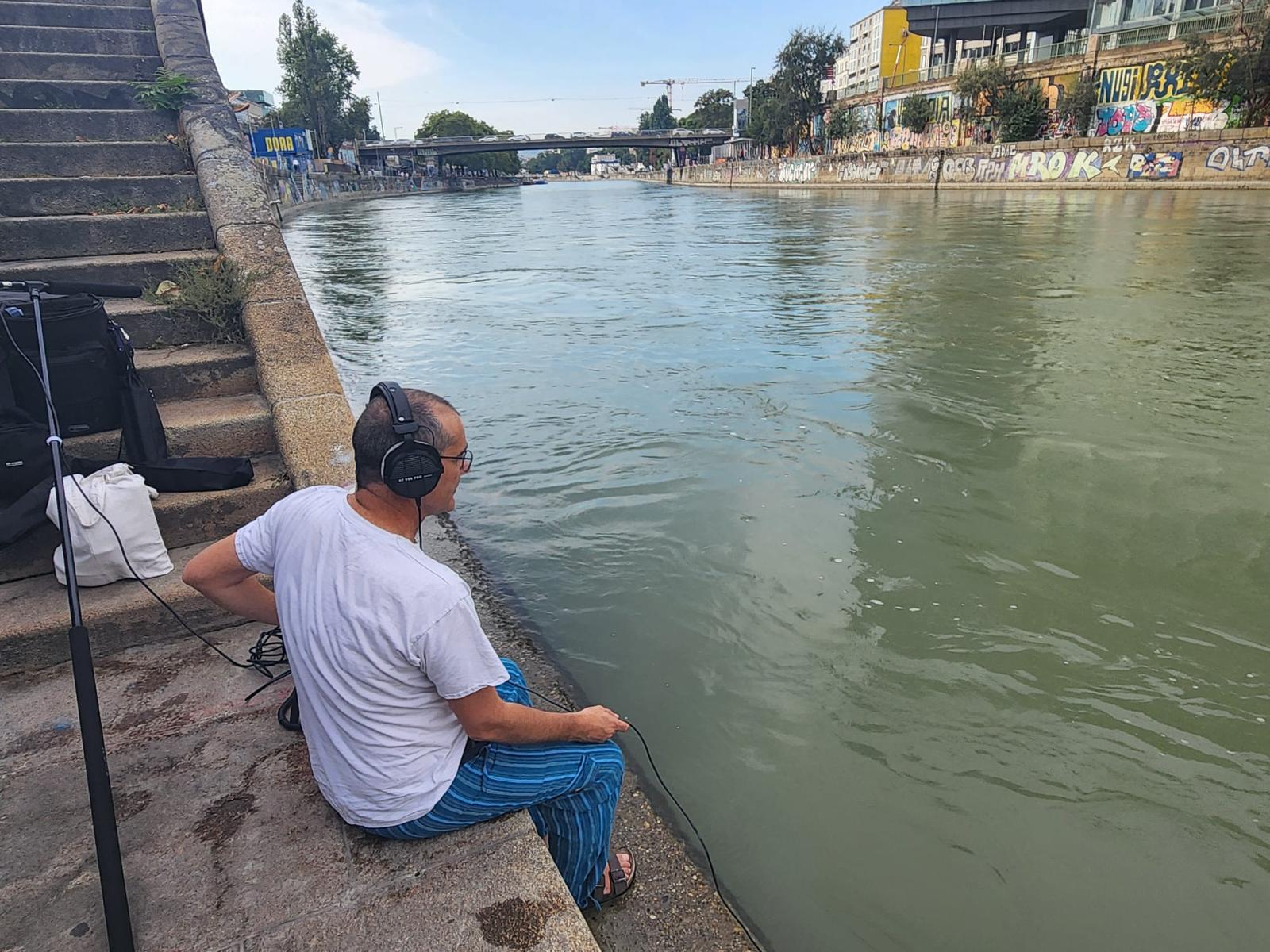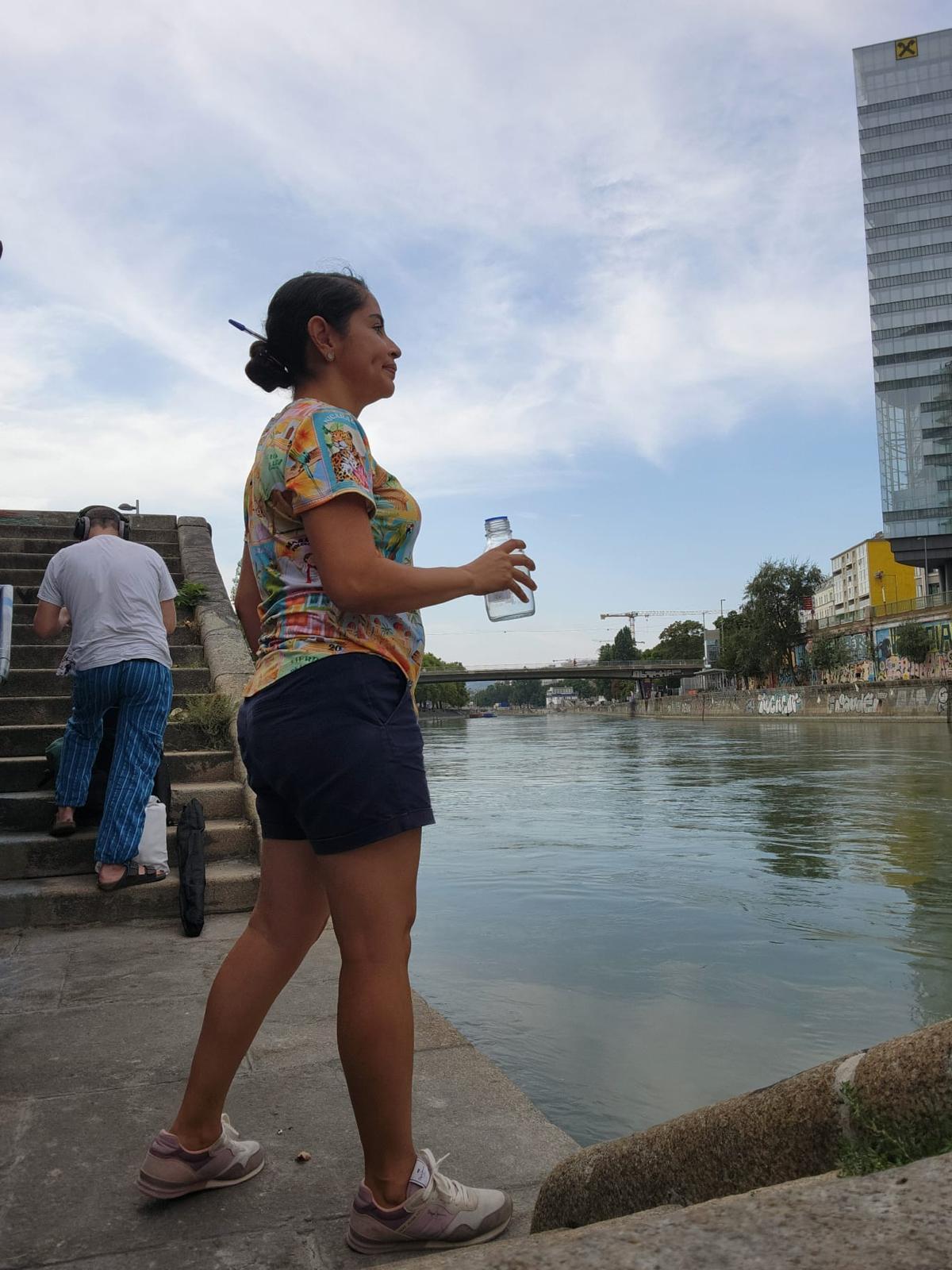Sound and Water Analysis - Donaukanal, Vienna
Donaukanal, Vienna, Austria

Sound Analysis
Step into a scene defined by nature’s quieter moods. The overcast sky blankets the area in soft gray tones, creating a cozy yet dramatic backdrop. The gentle patter of rain adds texture to the air, perfectly complementing the tranquil setting.
-
- Cloud-Kissed Ambiance: The thick, brooding clouds dominate the horizon, diffusing sunlight into a calming, uniform glow.
- Rain’s Rhythm: A light drizzle dances on the surfaces, bringing a subtle sense of movement and life.
- Wind’s Whisper: With barely a breeze to ruffle the air, the stillness enhances the soothing atmosphere
On the small wharf of the canal, near a bridge for cars and near apassenger’s ships harbor
Very crowded
Many different sounds coming from several sources: Ships, Ambulances, traffic, people talking and drinking under the bridge, music from the bars on both shores of the canal, etc.
Water Analysis

The water quality of the Danube River in Vienna, based on the analyzed parameters in sampling Donaukanal – V3, reveals both compliance with and exceedance of several limits for key water quality indicators.
The temperature (23.1°C), conductivity (364 µS/cm), TDS (240 ppm), salinity (154 ppm), pH (8.24), and dissolved oxygen (9.3 mg-O2/L) are all within safe and acceptable limits, supporting a healthy aquatic ecosystem. Nitrates (2.9 mg-N/L) and nitrites (0.007 mg-N/L) are significantly below regulatory thresholds, suggesting minimal eutrophication risk. Ammonium levels (<0.08 mg-N/L) are also well below the maximum allowed concentration, further indicating good water quality. Additionally, heavy metals like lead (1 µg/L), arsenic (0.9 µg/L), and total chromium (0.7 µg/L) are within acceptable ranges, reflecting minimal contamination from these pollutants. The total phosphorus (<0.04 mg-P/L) is also well below the 0.1 mg/L limit, indicating a lack of nutrient over-enrichment. Sodium (9.5 mg/L), BOD5 (1.9 mg-O2/L), potassium (2.4 mg/L), and essential minerals like calcium (49.6 mg/L) and magnesium (12.1 mg/L) all conform to regulatory standards, ensuring balanced mineral content and minimal organic pollution.
However, there are notable exceedances in the concentration of certain parameters. The cadmium concentration (1.1 µg/L) significantly surpasses the regulatory limit of 0.08 µg/L, which may indicate contamination from industrial or agricultural sources, potentially posing risks to aquatic organisms. Copper levels (3.8 µg/L) also exceed the 1.0 mg/L limit, which could be harmful to aquatic life due to its toxicity, affecting species sensitive to metals. Additionally, the total organic carbon (TOC, 3.5 mg/L) is above the 2 mg/L threshold, signaling higher organic pollution. This could lead to oxygen depletion and impact the overall water quality if organic matter is not effectively managed. The elevated concentrations of cadmium, copper, and TOC suggest that the river could be facing localized pollution challenges that require further monitoring and mitigation measures.
Note: The concentration limits used in the analysis are based on regulatory standards for surface water and drinking water quality, as outlined in the EU Water Framework Directive (EU WFD) and the EU Drinking Water Directive. These limits ensure aquatic ecosystem health and public safety. The Österreichisches Bundeskanzleramt (2024) provides specific limits for surface water bodies in Austria, while the EU directives offer broader standards for surface and drinking water across Europe. Both sources were used to ensure comprehensive comparison and accuracy of the values analyzed.
References:
[1] European Commission. (2018). Directive 2000/60/EC of the European Parliament and of the Council establishing a framework for community action in the field of water policy (Water Framework Directive). Official Journal of the European Union, L 327/1. https://eur-lex.europa.eu
[2] Österreichisches Bundeskanzleramt. (2024). Gewässerzustandsüberwachungsverordnung (GZÜV), BGBl. II Nr. 96/2006. Retrieved from https://www.ris.bka.gv.at/eli/bgbl/II/2006/96
[3] World Health Organization (WHO). (2017). Guidelines for drinking-water quality: Fourth edition incorporating the first addendum. WHO. https://www.who.int/water_sanitation_health/publications/dwq-guidelines-4th/en/
[4] European Union. (1998). Directive 98/83/EC on the quality of water intended for human consumption. Official Journal of the European Union, L 330, 32-54. https://eur-lex.europa.eu/legal-content/EN/TXT/?uri=CELEX%3A31998L0083


